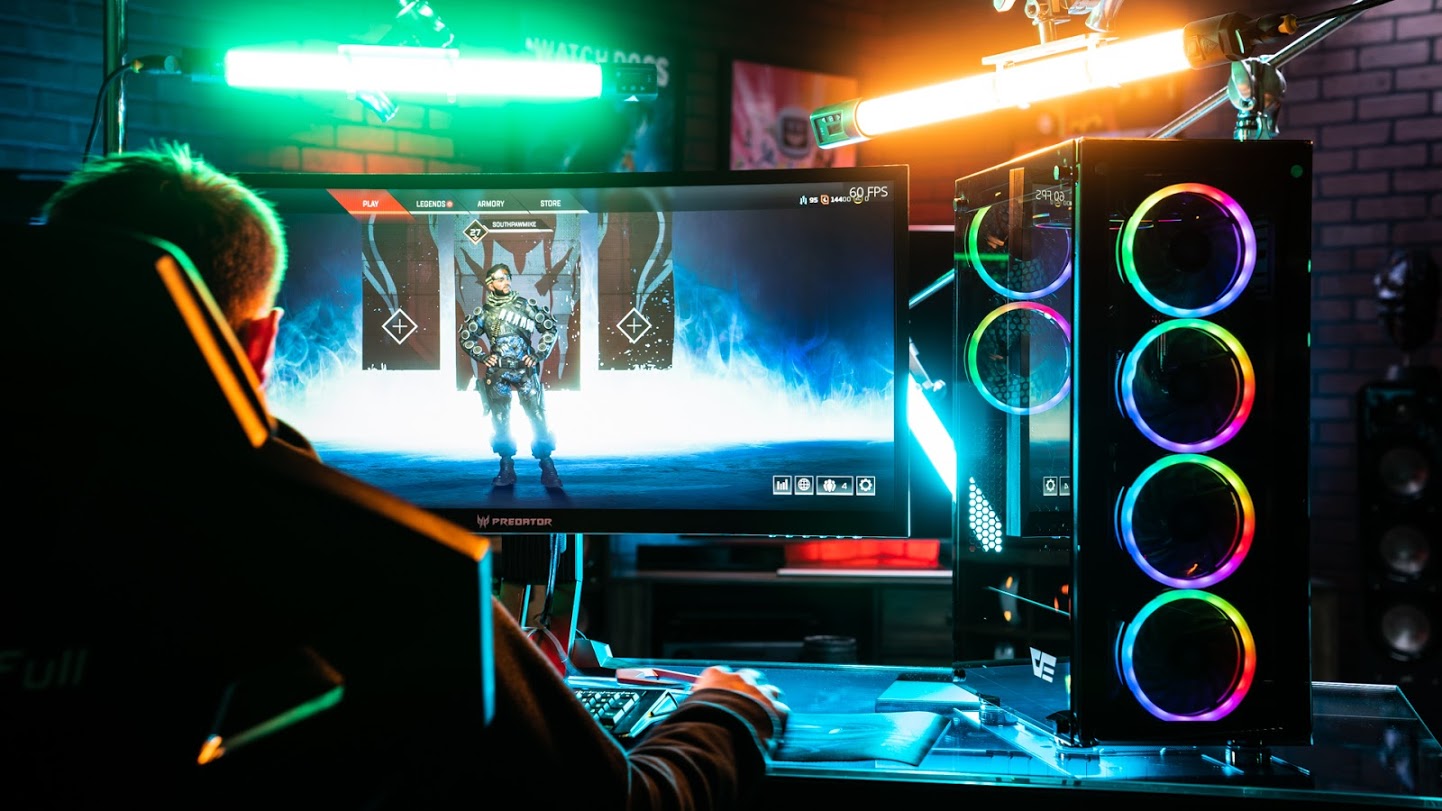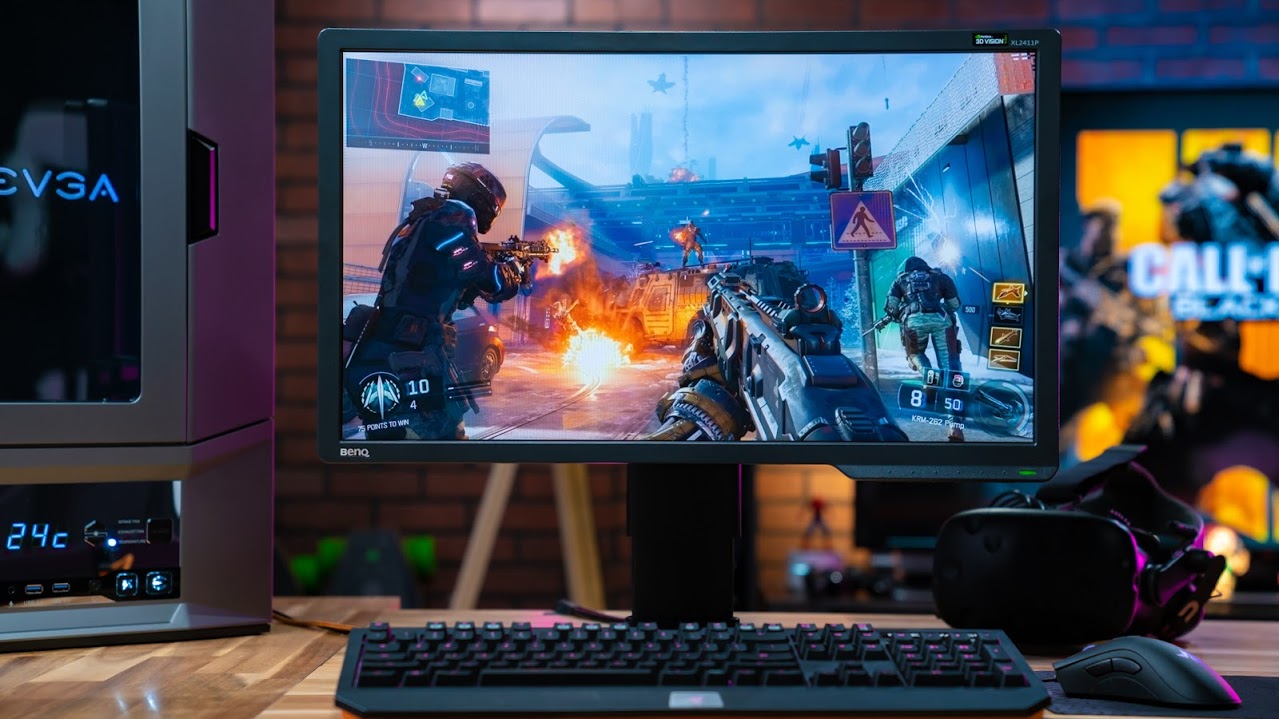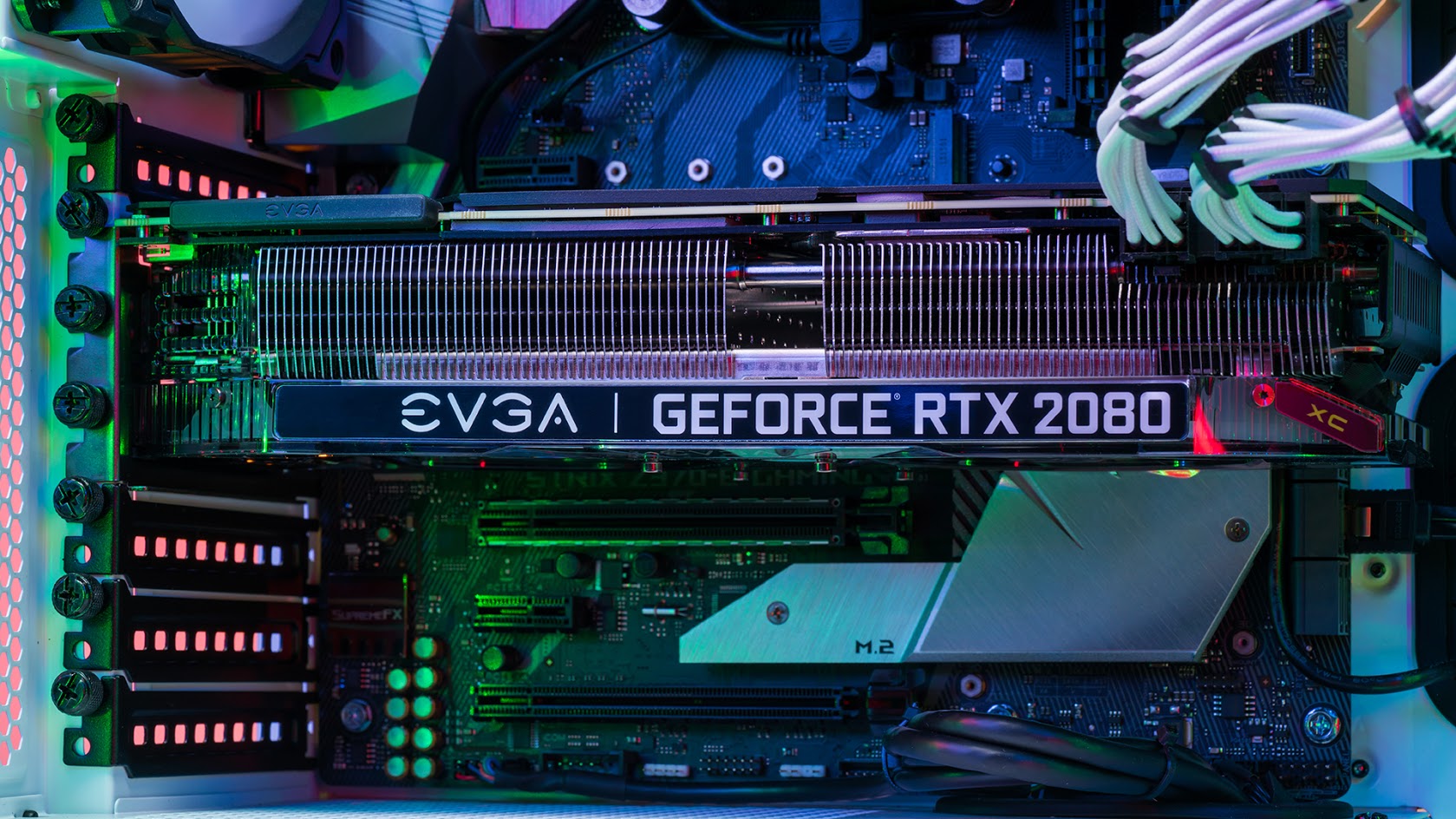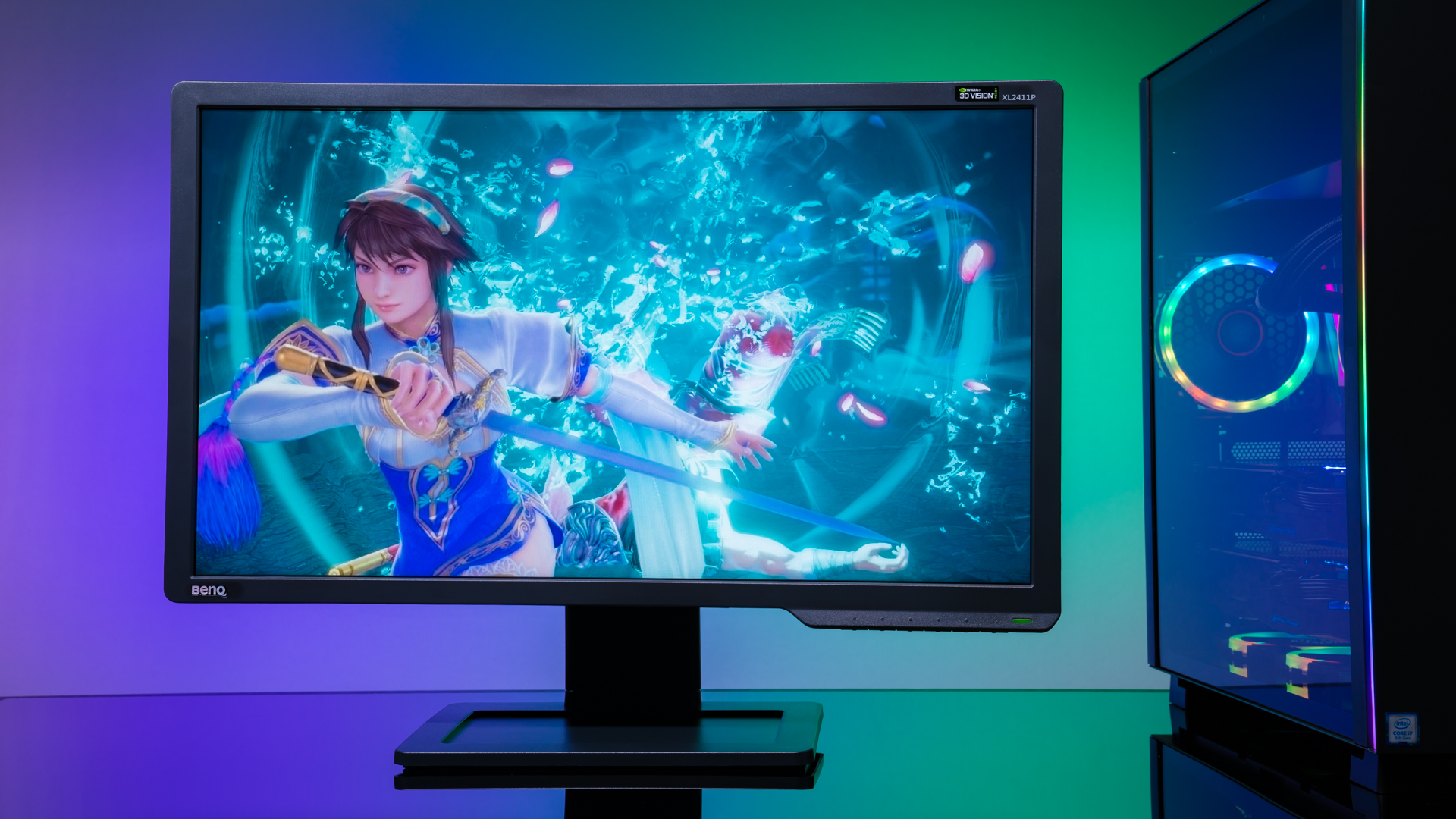
There’s more to a gaming display than just the size of the screen.While size can certainly be an important factor, there are other features to consider as well. Resolution should be a priority, alongside features such as aspect ratio, panel type, response time, and, importantly, the display’s refresh rate.
In this article we’ll explain what refresh rate is, and why it’s one of the most important features to consider when upgrading or replacing your monitor. We’re going to be focusing on refresh rate in monitors, specifically from a PC gaming perspective, but refresh rate is also important for other displays, like TVs.
GPU and Monitor, Working Together
 To understand refresh rate, it’s important to understand what’s happening between your system’s GPU and display while gaming.
To understand refresh rate, it’s important to understand what’s happening between your system’s GPU and display while gaming.
When playing a game, especially a modern title, your PC’s GPU and CPU are doing most of the work. The CPU is undertaking countless complex calculations and coordinating all of the hardware in your system, while the GPU takes point on translating all of that information into visual data that can be displayed on your screen. The GPU communicates with the display directly, which is why the display is usually connected directly to the GPU via an HDMI or DisplayPort cable.
This communication happens all the time, even if you aren’t doing anything except staring at your desktop. Things get a little bit more complicated when motion needs to be displayed, whether you’re moving your mouse or playing a game.
In those situations, your GPU prompts the display to draw a series of images in order to simulate motion, similar to traditional cell animation. Drawing an image over and over with slight variation tricks our brains into perceiving motion, when really it’s just a series of still images shown to us quickly. Each of these “pictures” that are “drawn” by your GPU is called a frame, and the amount of times an image is drawn per second is referred to as “Frames Per Second,” or FPS.
Higher FPS Is Better
 The more images you see in a second, the smoother that motion appears. That’s why higher FPS is desirable in games. It results in smoother looking gameplay.
The more images you see in a second, the smoother that motion appears. That’s why higher FPS is desirable in games. It results in smoother looking gameplay.
However, redrawing a complex image more times per second is taxing on your system, which is why GPUs continue to evolve the ability to render higher FPS. A more powerful GPU means more and faster calculations, which results in more FPS being sent to the display.
So, where does refresh rate come in?
Refresh rate refers to the amount of times a display is capable of displaying a new image, and is measured in Hertz (Hz). For example, a 60Hz refresh rate means a display is capable of displaying a new image 60 times per second.
Put another way, refresh rate is the ability of your display to “refresh” or essentially re-draw the image on the screen. This is often a limiting factor that’s lower than what your graphics card is capable of outputting. If your GPU is serving up 120 FPS, but your monitor has a refresh rate of 60Hz, your display will only redraw the image 60 times per second, meaning you will be missing out on that extra 60 FPS being provided by the GPU.
 Here’s an ideal real world example: let’s say you recently upgraded to a new GPU, and are playing your favorite game at 120 FPS. This means the image is being rendered by your GPU and provided to your display 120 times per second.
Here’s an ideal real world example: let’s say you recently upgraded to a new GPU, and are playing your favorite game at 120 FPS. This means the image is being rendered by your GPU and provided to your display 120 times per second.
If your display has a refresh rate of 120Hz, that means the image is being redrawn 120 times per second. This results in you experiencing the full benefit of that 120 FPS, which is ideal.
If your refresh rate is significantly different from the FPS being provided by the GPU, you can end up with display issues such as screen tearing. This is why matching the refresh rate of your display to the capabilities of your GPU should be a priority. And this is also where technologies like FreeSync and G-Sync come into play, because these features allow greater communication between your GPU and your monitor, automatically syncing up your hardware to provide a smoother experience whenever possible.
A higher refresh rate can improve your experience outside of gaming as well. Even when working, or just using an internet browser, motion will appear smoother as the screen is updating more frequently.
There’s really no disadvantage to a higher refresh rate, other than increased cost, assuming your hardware is up to the task.
What’s the Recommended Refresh Rate for Gaming?
 While 60Hz was a standard benchmark for a long time (and is still perfectly usable) higher refresh rates are quickly becoming the norm. It’s very common to see the old 60Hz standard doubled to 120Hz, and 144Hz displays are also increasingly popular. Specialized gaming monitors (often used by esports professionals) can feature even higher refresh rates, such as 240Hz or more. While not everyone needs a display that fast, higher refresh rates can provide distinct advantages in high-level esports, where seeing every frame can substantially impact the outcome of a match.
While 60Hz was a standard benchmark for a long time (and is still perfectly usable) higher refresh rates are quickly becoming the norm. It’s very common to see the old 60Hz standard doubled to 120Hz, and 144Hz displays are also increasingly popular. Specialized gaming monitors (often used by esports professionals) can feature even higher refresh rates, such as 240Hz or more. While not everyone needs a display that fast, higher refresh rates can provide distinct advantages in high-level esports, where seeing every frame can substantially impact the outcome of a match.
Anything higher than 60Hz is an improvement, though how high you want to go is really up to you. Again, you’ll want to ensure your GPU is equipped to handle the higher refresh rate; a 240Hz refresh rate display won’t do you much good if your GPU is only capable of pushing out 60 FPS. If you have no idea where to start when shopping for a new monitor, and you play PC games, picking a display capable of at least 120 Hz is more than likely a good choice for you.
Ideally your system will be balanced, with a display refresh rate that matches the capabilities of your GPU. Once you do upgrade to a higher refresh rate, you may find it hard to go back to a lower one. The improvement is that substantial.
Now that you know what refresh rate is, and how it can impact your gaming experience, take a look at this selection of high refresh rate monitors to see which one best compliments your system.

